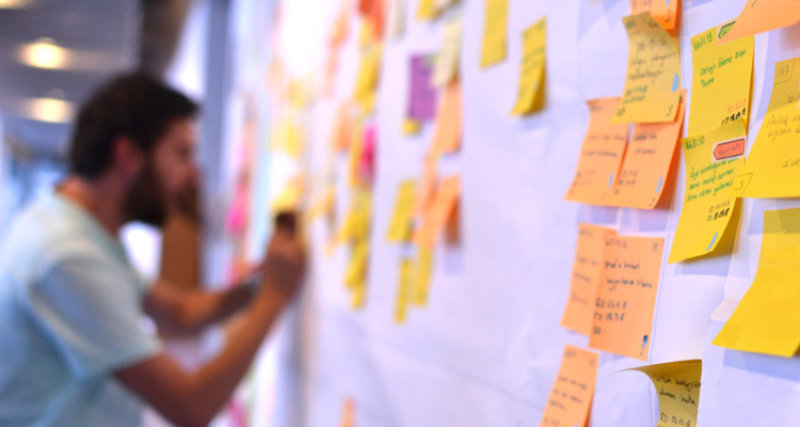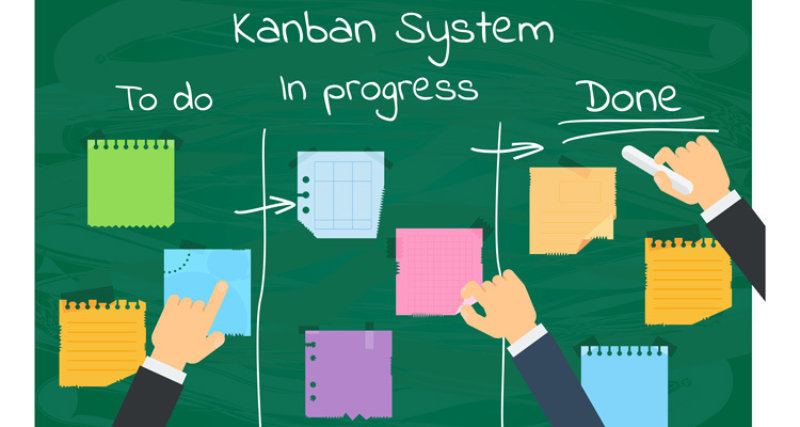
Whether you’re a cook using a recipe to make a new entree, a kid using instructions to build a new lego set, or a developer using a code example to learn a new language, guides can save your sanity and help you learn faster. The same is true for creating a new Kanban board or for modifying an existing board.
Seeing how other teams structure their boards can be extremely helpful. In fact, that’s why we include board templates in our application and have curated board galleries like 10 Kanban Board Examples for IT Operations & Development. All too often, though, we see teams get caught in the “template trap.” It happens when you try to force-fit your team into following a template, instead of creating a Kanban board that reflects your actual workflow.
Through thousands of interactions with customers, we’ve learned that the most successful teams build their boards to map their own process; then, they continually modify their boards to accurately reflect their unique process as it evolves.
Avoid the Template Trap
Whether you’re creating a brand new Kanban board or are ready to make changes to an existing one, you’ll often look to the board templates for guidance. It’s tempting to consider such templates as “best practices” — quick fixes that will make you an automatic success. But, “best practices” is a terminal phrase that suggests there is nothing more to learn.
When it comes to these examples, it’s easy to think, “It worked for these organizations, so why won’t it work for ours?” But, if your organization isn’t a carbon copy of those that achieved success in a certain way, you probably won’t experience a carbon copy outcome. You’re better off considering lists, examples, templates, and the like as “good practices” which you can examine, extract bits from and apply as needed.
When to use a Kanban board template “as is”
Using a Kanban board template may be appropriate in the following scenarios:
- For new teams with no pre-existing workflow: In this case, templates can be a great way to learn from the experience of others and start off a few steps down the learning path.
- To save time when building your workflow in a new board or tool: In this case, grab the template most like your process and then modify it to mimic your existing process.
- To generate ideas for modifying your board: See step 3 below.
But, if you aren’t in one of the three categories above, you’ll likely benefit from skipping the template and starting out by mapping your own unique process. The five steps offered below will help you learn how to customize your board for success.
5 steps to customize your Kanban board
Your workflow will change as business needs dictate. And, because your Kanban board is a reflection of your workflow, you’ll want it to change as well. There is no perfect Kanban board design. The key is to realize that your board is a work in progress, which you will continually update as you identify and solve problems. Here are some recommended steps to do just that:
1. Map your current process
It’s well worth investing the time to watch the webinar that our CEO, Chris Hefley, did last year on mapping your Kanban process. This webinar will take you beyond understanding your workflow, and walk you through identifying varied incoming sources of demand, discussing queues, identifying ownership of work throughout your process, and more. Often teams fail to identify hidden work because it’s not readily apparent or labeled as such. The webinar may help you fill in that gap. If you don’t have the time for the full webinar, take just a few minutes to review the slide deck.
A key point from the webinar that I want to reiterate is: “Resist the urge to re-engineer or make improvements to the process [when starting on a new tool like Planview AgilePlace]. Just start with what you do now.” Likewise, the Kanban Method suggests that, after visualizing your current process, you make a commitment to embark on a continuous stream of small, evolutionary improvements. Why?
- It’s easier for people to handle a series of smaller changes than one huge change all at once. Many large changes are abandoned before they can be successful.
- You can’t easily measure the success or failure of a change without having information to compare it with. If you start right away with changes, you don’t have a way to measure their success or failure.
- Training people how to identify and correct issues is a key skill that can keep your business afloat long-term.

- After you’ve visualized your existing process, you’re ready to observe and gather data.
2. Determine a problem to attack
Your Kanban board can visualize more than just the cards on the board and how work flows through your system. When you make your Kanban board truly representative of your process, and you begin limiting work-in-process (WIP), you quickly begin to see when work isn’t moving through the system as well as you wish. For instance, if work starts collecting in one step (or lane), you know there’s a need to look deeper at what might be causing a bottleneck.
When you begin to recognize problematic patterns on your board, decide which would be most helpful to improve.
- For your first effort, choose a problem that’s relatively easy to impact positively. Getting a quick win early on is a good way to make people confident in your ability to drive successful change.
- Just pick one problem. Making too many changes at once makes it difficult to figure out what truly caused which outcome. You need to know what to repeat or avoid to achieve success in the future.
Once you’ve determined what problem to attack, look at your current state versus your desired state and identify the gap that needs to be bridged.

3. Design a change and form a hypothesis
In the previous step, you identified the gap between your current and desired states. Now you’ll want to hypothesize ways to begin bridging that gap. Here are a few things to keep in mind:
- A problem may have more than one cause, so one change may not be a silver bullet. Attack one cause per experiment.
- Design small changes to keep cost low, maintain high safety levels, and generate fast feedback.
- Identify how much closer you think this change will get you to your target condition.
The larger and more complicated the experiment, the higher the cost. The higher the cost, the more you need to be right the first time. We all know that no one makes perfect decisions all of the time, but large-scale, knee-jerk reactions without hypotheses can cause more pain than they fix.
So, since you can’t predict the future, design smaller, low-cost experiments instead. Then, if your hypothesis is wrong, there’s little harm done. In other words, if you’re going to fail, fail quickly and cheaply. When you and your team adopt this mindset and display the ability to take small and inexpensive calculated bets, your organization’s confidence in your ability to lead successful change will quickly grow.

4. Make the change, observe and review the data
The next step is to make the actual change. Be considerate when making changes to your Kanban board and workflow, since they directly impact your team’s daily work. Avoid creating a lot of overhead and make sure you communicate often and clearly about what’s happening so people aren’t confused and frustrated.
After making the change, observe its impact. Many teams falter by failing to measure the impact of changes they make. It doesn’t matter if your measure is quantitative or qualitative, but you lose the ability for this change to impact future decisions if you don’t close the loop and analyze the impact against your hypothesis.

5. Repeat, repeat, repeat
Make evolutionary, not incremental, changes to your Kanban board design. If you’re familiar with Agile concepts, this should make sense. Have a goal that you want to move towards, but don’t plan every step in advance. Instead, learn from each step to plan the next. At certain intervals, review progress on the larger path and see how close you are to your intended target condition.
Summary
Solutions are helpful, but the ability to understand and solve problems is indispensable. Giving someone a solution can provide a significant, but short-term, benefit. However, teaching someone how to solve problems on their own provides exponential value. By helping your organization become proficient at solving the problems they face, you give them the skills to generate that exponential gain well beyond the ability to continue to customize their Kanban boards.



